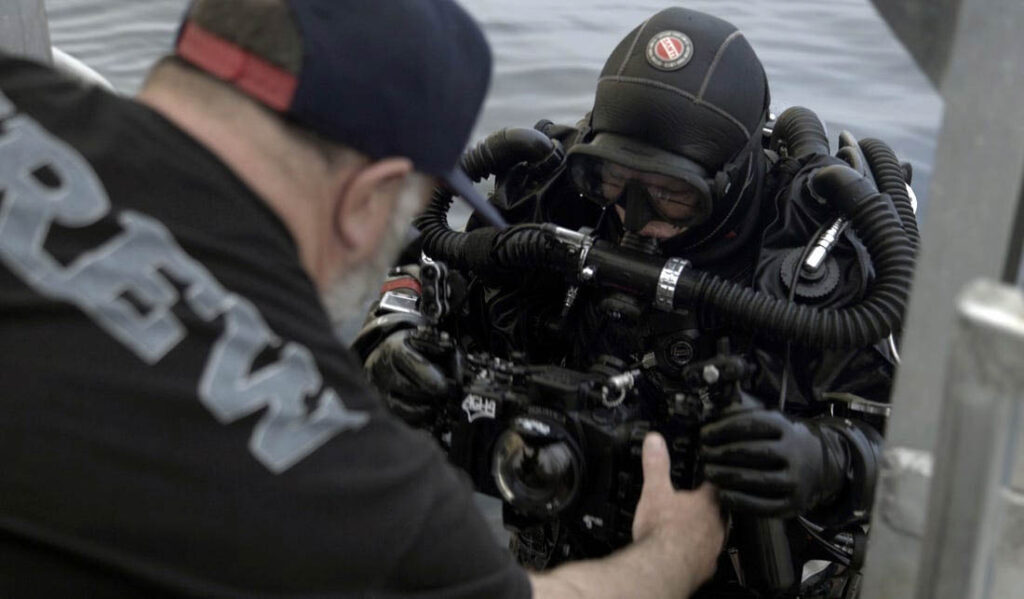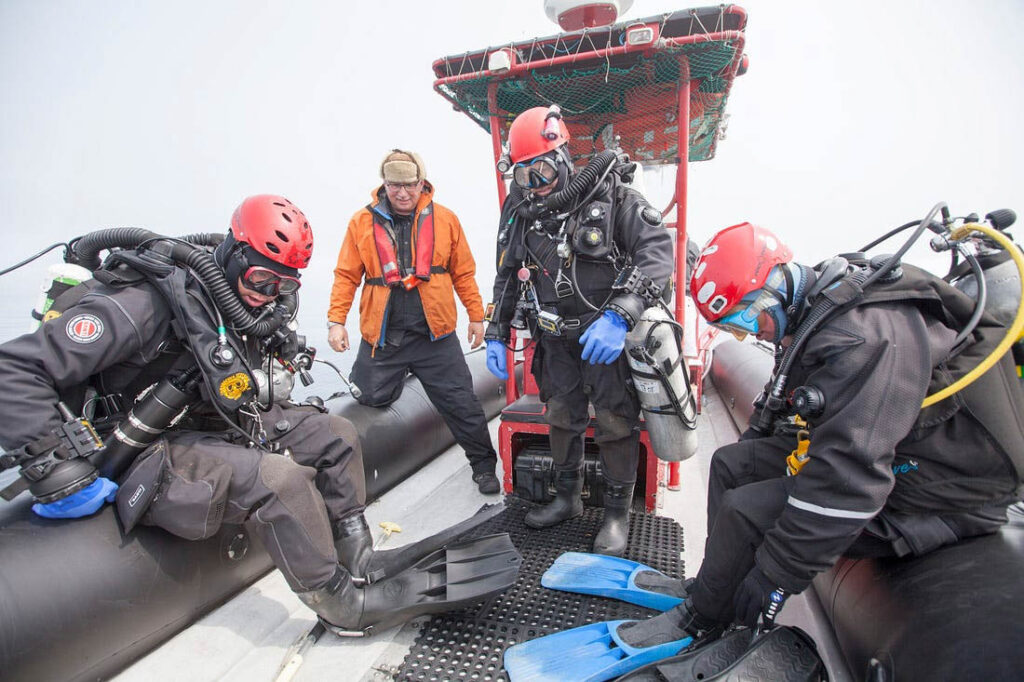Whether you’re an elite athlete or someone who takes blood pressure meds, you might think you’re invincible in the water. But once you see a friend nearly drown without ever taking his regulator out of his mouth, you think differently about panic.
It happened on what should have been a routine dive. My buddy surfaced beside the boat, but something was off. He was gasping, eyes wide, clawing at his dry suit neck seal. Between panicked breaths, he tried to say, “I can’t breathe.” The sound coming from his throat was a horrible, wet rattle.
At first, it didn’t make sense. This was a guy with over 30 years of dive experience. His buddy had surfaced with him and was already stepping onto the lift platform at the stern, completely unaware anything was wrong. It all clicked in my head at once: the experience, the sudden distress, the blue skin color. I’d seen this before.
Years earlier, another dive partner of mine had suffered from Immersion Pulmonary Edema, or IPE. It’s more common than most people know, and when it hits, it hits fast, and it can be deadly. I knew we had to get him out of the water immediately.
Within minutes, we had him seated on the deck, gear stripped off, dry suit neck seal removed, oxygen mask on his face. He coughed pink, frothy fluid into a bucket while our Safety Officer held it steady. I leaned over to the captain and quietly said, “Have an ambulance meet us at the dock.”
Once seated upright and on oxygen, he began improving quickly. His color came back. His breathing, while still labored, started to sound more normal. He looked embarrassed, even tried to brush it off.
“You guys should go for another dive,” he said.
We weren’t buying it. A half cup of bloody froth was all the proof we needed—he needed a hospital, not a second dive.
By the time we reached the dock, about 42 minutes after surfacing, he was chatting again and looking much better. In the ambulance, his oxygen saturation was still only 86%. At the hospital, X-rays confirmed what I already suspected: IPE. Mild pulmonary edema in both lungs. Not drowning. Not decompression sickness. Just fluid buildup inside the lungs, caused by his own body.
Turns out, he’d forgotten to take his blood pressure meds that morning. Combine that with a deep dive, cold water, and a tight neck seal, he had the perfect storm. He told me he’d had a similar episode in cold water over ten years ago, but back then, he shrugged it off because he recovered so fast.
He hadn’t felt anything unusual during the dive itself. It was only at the start of the ascent that he noticed trouble breathing. At first, just a little tightness. Then a cough. Then a growing panic—but instead of signalling his buddy, he focused on staying calm. He had 17 minutes of decompression to get through. Somehow, he held it together, made the stops, and surfaced like nothing was wrong. But once vertical at the surface, the pressure differential and squeeze from his dry suit made things worse. That’s when he signalled for help.
Above: The majority, but not all of IPE reports come from cold water dives.
Less than an hour later, he was walking off the boat to the waiting ambulance. At the hospital, the x-rays weren’t that dramatic. Just a bit of fluid low in the lungs—unlike a drowning, where fluid fills everything. But it was enough to confirm the diagnosis.
IPE is a strange beast. It doesn’t care if you’re fit, healthy, or a careful diver. It’s not about sucking in water. The fluid in the lungs comes from inside your own body. Cold water, high exertion, tight gear, underlying health issues—they all play a part. Hypertension, cardiac issues, cardiomyopathy, cardiovascular disease, and pre-dive hyper-hydration can all contribute to high risk in regard to IPE. And once it starts, it can spiral fast.
The scariest part? Many divers probably experience it without even knowing. It’s often mistaken for a panic attack or blamed on bad gear. In reality, it’s your lungs filling with fluid while you’re still underwater. And if you panic, the outcomes can be tragic—drowning, skipped decompression, embolisms, or worse.
There’s no miracle treatment for IPE. The key is recognizing it and getting out of the water as fast as possible. Oxygen helps. Being upright helps. Staying calm helps. And if you’ve had it once, there’s a decent chance it could happen again. That makes follow-up with a dive-savvy doctor essential.
Thankfully, my friend recovered completely. Within six hours, he’d been evacuated, treated, tested, and released—with a clean bill of health and a cold beer in his hand.
The boat had already refilled the oxygen bottles and reset emergency gear by the time they headed back out for the next dive. But for the rest of us, that day was a wake-up call.
IPE isn’t just something you read about in medical journals. It’s real, it’s fast, and it could happen to any of us. So the next time you feel short of breath in the water—don’t just tough it out. It might not be your gear. It might not be nerves.
It might be your body trying to tell you that something serious is happening.
And it might be the only warning you get.
THE SCUBA NEWS Link !
DemirHindiSG 23 Ekim 2025-23:56








